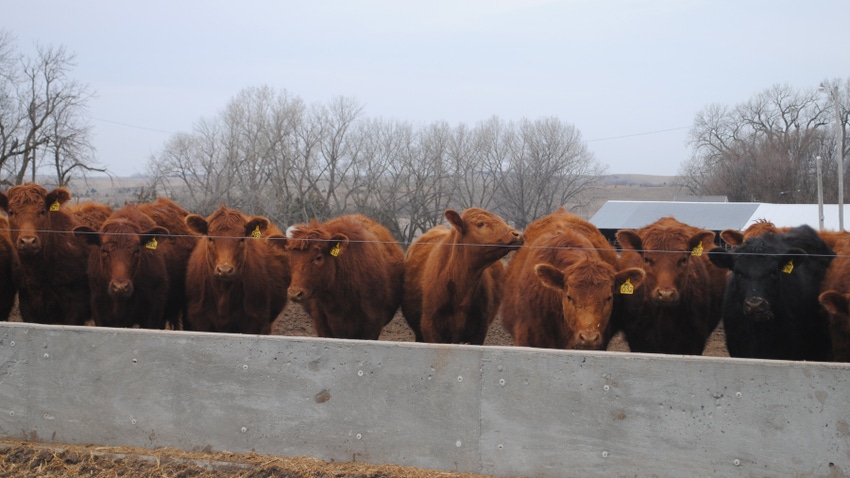
With unseasonably warm temperatures after substantial snowfall, the weather has created the perfect storm for muddy conditions. The feedlot sector has been hard at work trying to provide adequate response and maintain performance for cattle in the Midwest.
“Winter weather is a large drain on body heat,” says Galen Erickson, Nebraska Extension feedlot specialist. “[Cattle] can experience three to six times more heat loss than a dry animal.”
Erickson says that looking out at the yard and seeing cattle lying down, that’s a good sign. When mud reaches up to 7 inches deep, animal health might be a bigger concern than performance.
Performance of feedlot cattle in these conditions can also take a hit, depending on the depth of mud.
Erickson reports findings from the 2011 Nebraska Beef Report from Terry Mader, emeritus professor of ruminant nutrition.
“With mud of 2 to 7 inches, there is an estimate of a decrease in gain up to a pound a day with more mud,” the report said.
But that’s not all. With more mud, there is a negative impact on dressing percentage when cattle are shipped to the packer.
Actionable steps
While these conditions are less than ideal, there are ways you can combat the mud now. Alfredo DiConstanzo, Nebraska Extension beef systems educator, gives four practical ways that you can mitigate risk once mud has taken over the feedlot:
1. Bed cattle. While getting cattle to high and dry areas may not be possible based on the feedyard design, bedding can be a useful tool. “If we were to prorate it, perhaps 4 pounds of bedding per head per day would be sufficient,” DiConstanzo says. “In some cases, we have used as much as 8 pounds per head per day.”
2. Reestablish pen drainage. DiConstanzo recommends that feedlot operators break down soil dams in swales and fence lines. This will allow ponded water to be drained from the pens.
3. Relocate animals. By relocating animals, the stocking rate pressure will be relieved. In cases where certain pens are in worse condition than others, depopulate pens posing the greatest risk.
4. Add aggregate. An aggregate that is preferred for limiting mud accumulation is crushed limestone. This is used to restore critical access. It is important to choose a larger size for the base material.
Preparing for the future
To prevent future mud disasters in the feedlot, it is important to know how to mitigate risk. Erickson gives some options that are being researched right now to prevent unsafe conditions for both cattle and handlers in the feedyard.
An option that could be used is creating mounds with other support options. This allows the cattle to stay high and dry when unusual precipitation happens.
However, Erickson recommends that clean pens be maintained going into these winter weather conditions. The manure can act as an excellent sponge and soak up some of the extra moisture that accumulates. Having bedded areas will give the cattle a good place to lie down, where they are not using more of their energy on maintenance.
For more information on how to manage a muddy feedyard, visit beef.unl.edu.
About the Author(s)
You May Also Like






